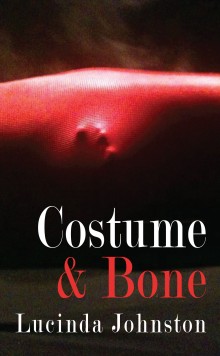Costume and Bone
Costume and Bone’s two stories are set in downtown Toronto during the 1980s, when Queen Street West was lined with hotel taverns and crumbling shops overlaid with the dwellings of its residents. In “Raine,” an anorexic who embraces poverty after a childhood of privilege, stows frozen grocery cakes in her rooming house refrigerator, always carrying one under her coat as she travels throughout the city. She attends a small dinner party where uninvited guests arrive while she confronts secrets and lies of the past and present. “The Taxidermist” portrays Jules, a gorgeous but taciturn artisan who meticulously documents the details of his life on an endless series of index cards. He maintains uneasy relationships with a ballet dancer whose limbs go to sleep and an Ojibwe wife who hasn’t left the apartment above his shop in nearly five years. When Jules learns that a sick elephant calf languishes without proper treatment at Toronto’s C.N.E., he becomes obsessed with saving its life.
Folded into the trajectories of this book’s stories are reconfigured narratives drawn from religion or mythology and themes of theatre, opera, fairy tale, and verse. An anorexic might never have chosen her path without traditional sanctions of self-denial and suffering. An Ojibwe woman may not be aware of her demise until she is reminded of Turtle Island. The intertextuality is rendered startling at times through the poetic intensity of Costume and Bone’s writing. Elsewhere, mingled narratives are barely noticeable, simmering beneath its visual intricacies.
Both stories are concerned with the fragility of the body and how it can betray itself as well as be destroyed by others. The ghosts of misfortune cast shadows beyond the characters, damaging what is innocent as it is also most alien then welcomed back to fill the space between desire and loss. Through vivid, tightly crafted yet hypnotic language, the body is represented as an abundant environment, teeming with energies that reinforce broken histories. The momentum of the surrounding world is continually detailed, offering change and urging survival. If the realms within and without, composed of sense and dream and story, can only be acknowledged and claimed, there might grow self-regard, a clear perception of other beings, and the capacity for mercy.









